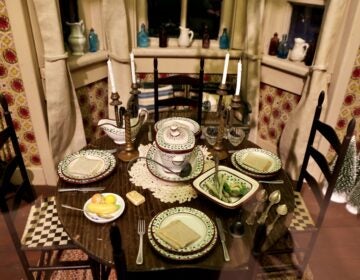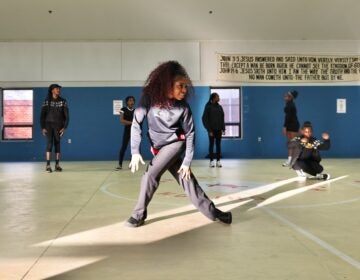Brandywine Museum displays the ‘rainbow of America’ in children’s books
Displaying the “rainbow of America,” the museum in Chadds Ford is exhibiting stories of nature and family through diverse cultural lenses.
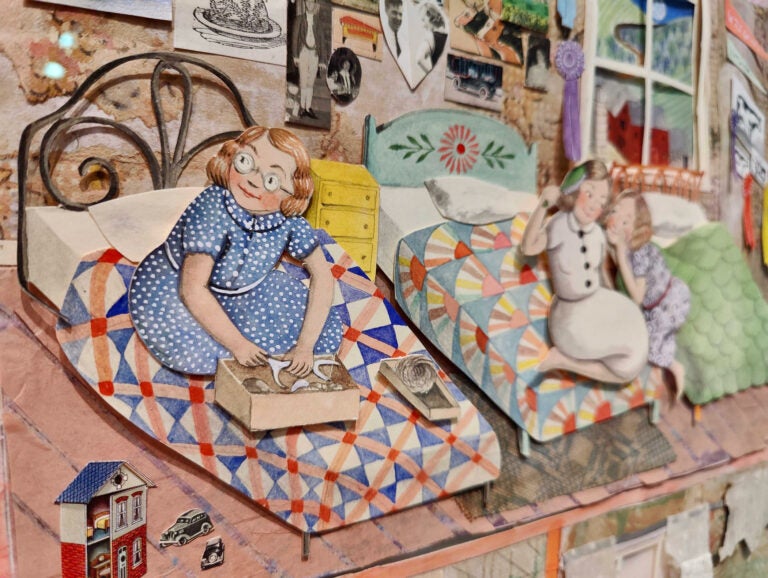
A detail from “In the home with twelve children were born and raised, where they ate and slept and laughed and loved and grew quite old” by Sophie Blackall, from her book “Farmhouse” (2022). The artist created a large paper cutout dollhouse, and over the course of the story she switched out objects to show the house slowly deteriorating over time. (Peter Crimmins/WHYY)
From Philly and the Pa. suburbs to South Jersey and Delaware, what would you like WHYY News to cover? Let us know!
When Shadra Strickland approached eight artists to contribute more than 75 illustrations to the Brandywine Museum’s new exhibition, “Rooted: Family and Nature in Contemporary Children’s Literature,” there was no hesitation.
“As soon as you say, ‘Please show at the Brandywine,’ people are: ‘Yes, absolutely!’” she said.
Strickland said professional illustrators hold the Brandywine in high regard for its significant collections of 19th and early 20th century work by N.C. Wyeth and his mentor Howard Pyle.
“These are the godfathers of illustration,” Strickland said. “Every artist who went to art school cut their teeth on the Wyeth tradition.”
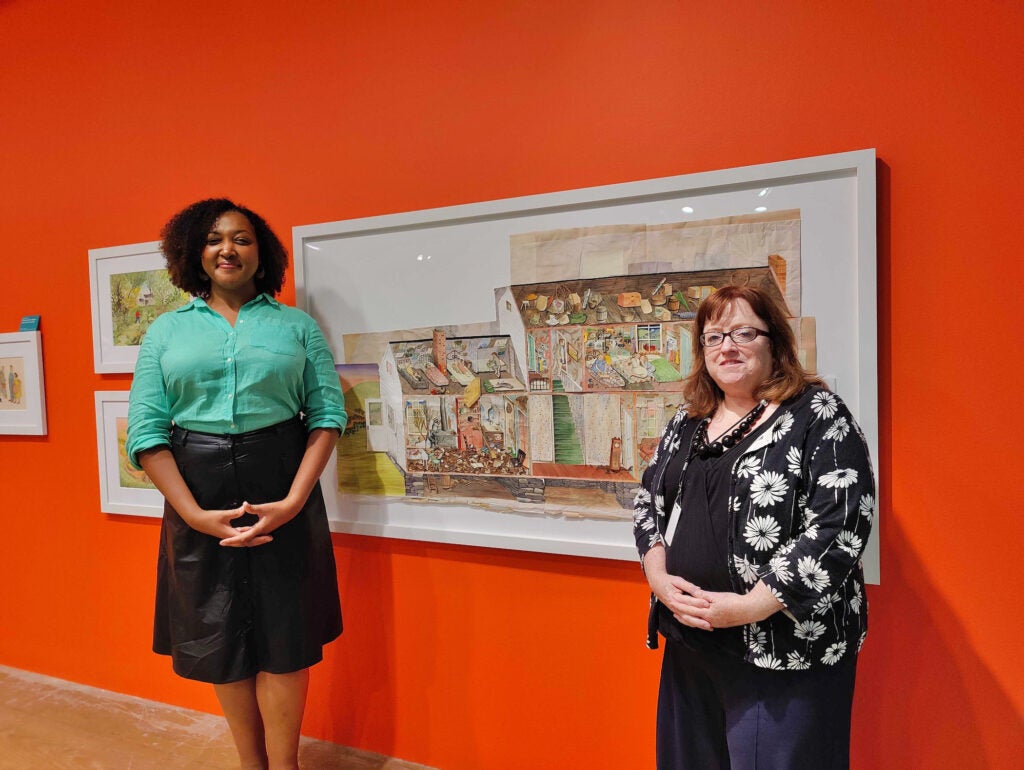
Strickland is a professional illustrator based in Baltimore who regularly brings her award-winning children’s books to Philadelphia’s annual African American Children’s Book Fair. The Brandywine asked her to co-curate “Rooted” with its associate curator, Audrey Lewis.
“I wanted to have a partner who would help bring us the best artists,” Lewis said. “We worked together for months, buying books, reading them, sharing our thoughts on them. We finally came to the decision of these eight artists.”
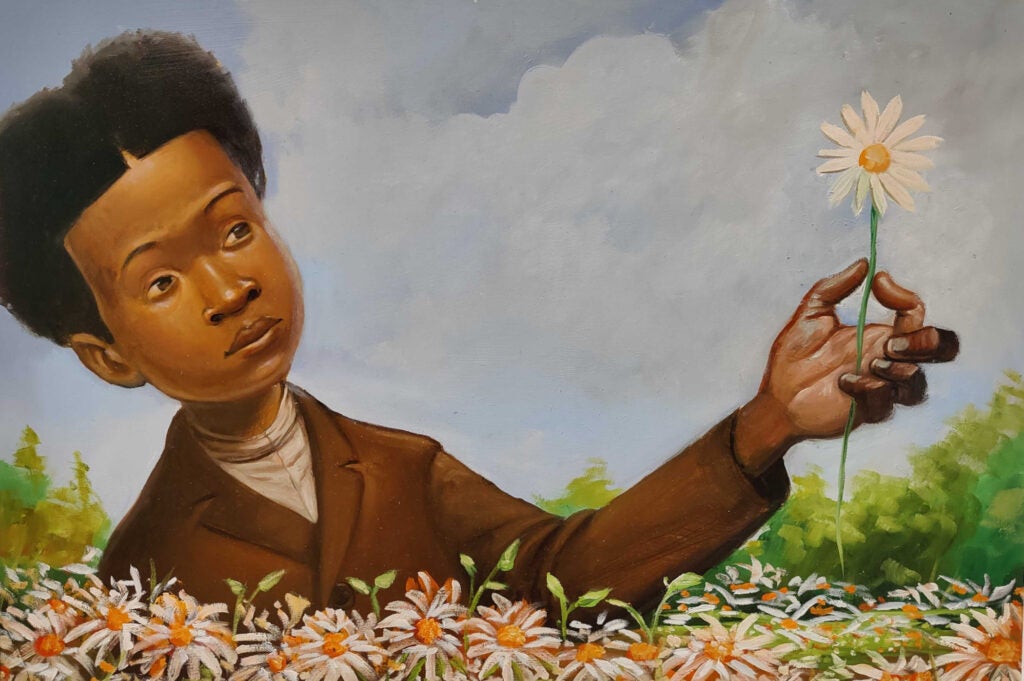
The eight artists represent a wide range of styles and cultural backgrounds: from an urban Chinatown (Qing Zhuang’s “Rainbow Shopping”), to the adventures of a suburban Latino father and son (Joe Cepeda’s “Rafa Counts on Papa”), to an Indigenous Asháninka girl in a Peruvian rain forest (Juana Martinez-Neal’s “Zonia’s Rain Forest”), to a Black mother and child spending a rainy day together (Cozbi A. Cabrera’s “Me and Mama”).
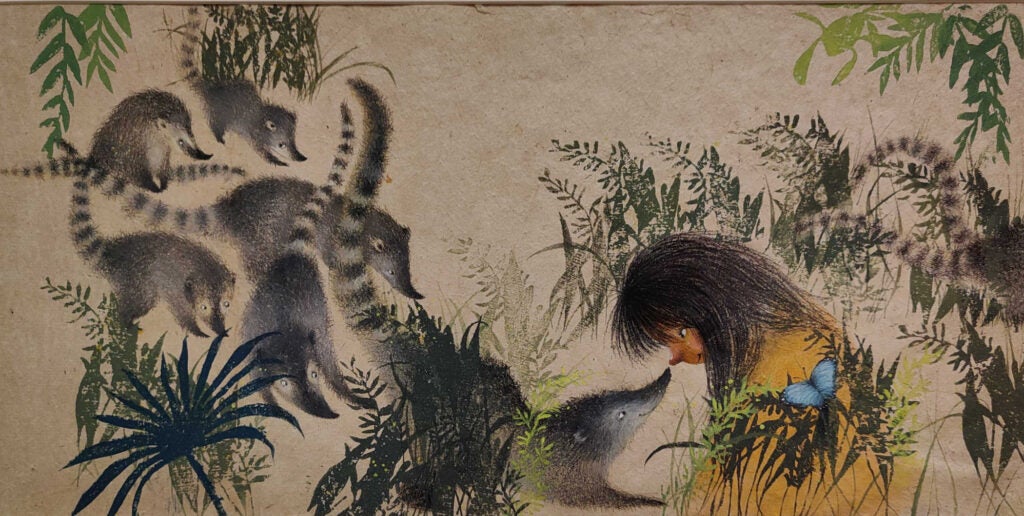
Four of the eight featured artists have won the Caldecott Medal, the most prestigious award for illustrated children’s books given by the American Library Association. Two won the medal for their book shown in this exhibition: Cabrera’s “Me & Mama” and Micha Archer’s “Wonder Walkers.”
Strickland and Lewis chose books with universal themes of family and nature, which take on unique cultural perspectives.
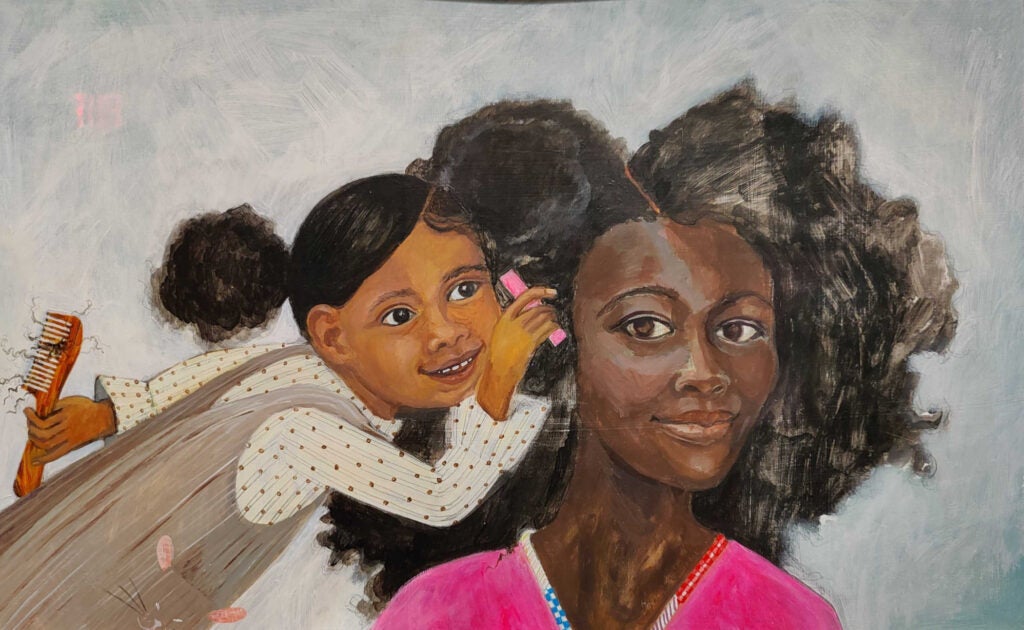
“A story like ‘Me and Mama’ — it really is a mother and a daughter and their day together on a rainy day. I think everyone has experienced that,” Strickland said. “But then you get someone like Juana, who’s doing ‘Zonia’s Rain Forest’ about conservation and this young person in their environment that’s being threatened.”
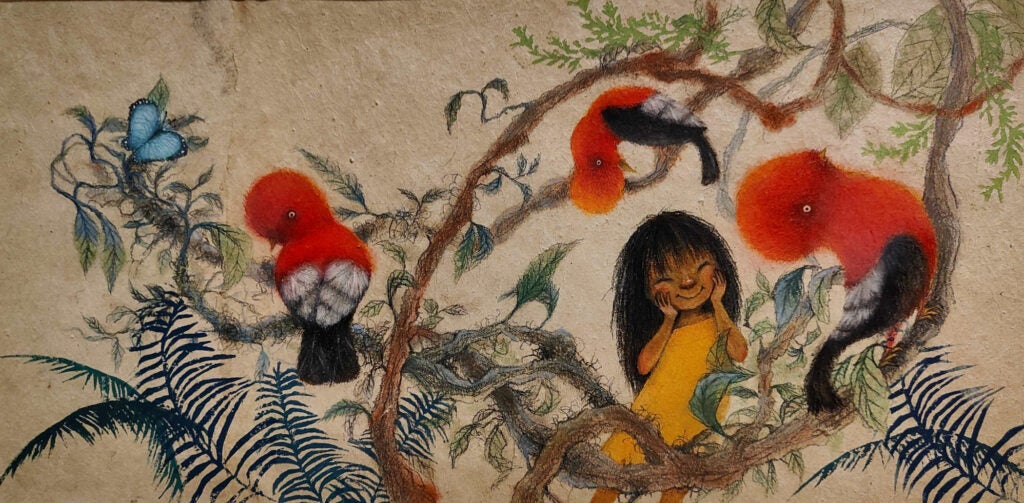
“As a woman of color I love seeing the rainbow of America, the fabric of America being reflected in children’s books,” she said.
Several illustrations from each book are on display in their original form. That means the works are generally much larger than they appear in print, and viewers are able to see up-close artistic details that can be missed in the published works.
Frank Morrison, for example, paints his illustrations with oil paints, unusual for typical children’s book illustrations. It’s a more labor-intensive process that can achieve subtle texture and color effects. Martinez-Neal makes woodblock prints on paper handmade from the pulp of banana tree bark, a nuance that can be overlooked in the print edition but apropos to the story set in a Peruvian rainforest.
The most dramatic piece is the cluttered, five-foot long paper dollhouse Sophie Blackall made for her book “Farmhouse,” based on the history of the abandoned property she and her husband bought in the Catskills of New York and renovated into an artist’s retreat.
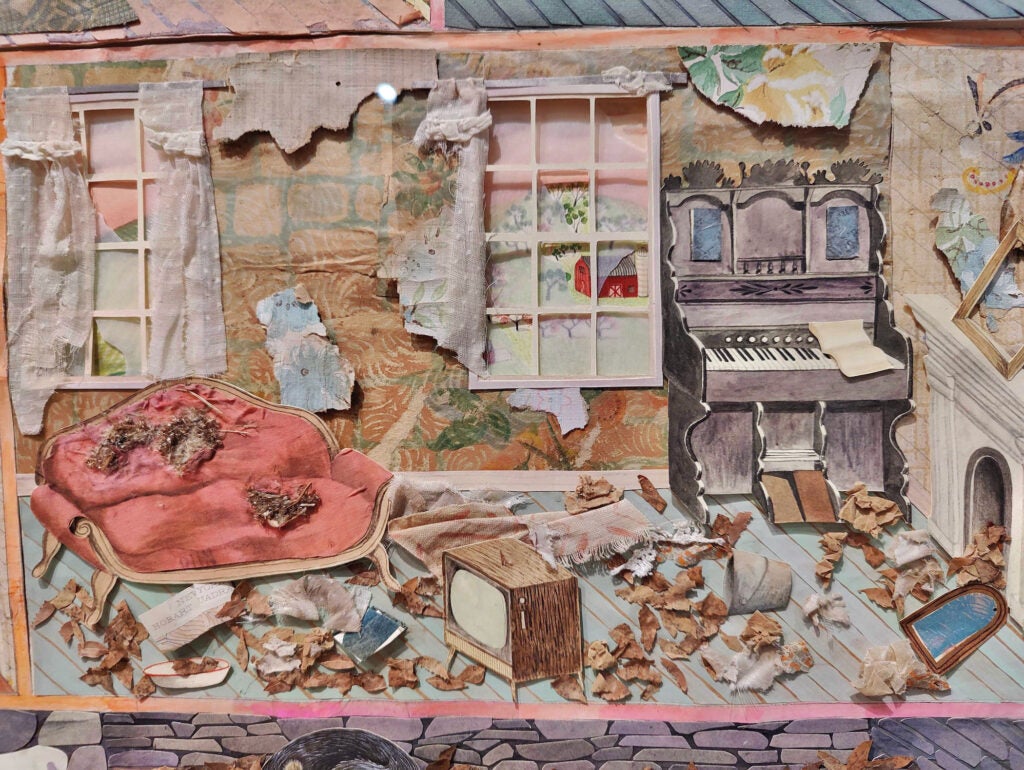
Each figure and object in the house is a paper cut-out which Blackall manipulated and photographed to make the images in the book. Over the course of the story about the life of the family who lived there, Blackall swapped out objects to make the house appear to slowly deteriorate over time until it resembles the dilapidated structure she bought.
“You could just stare at it for hours,” said Lewis.
“You want to touch it,” added Strickland. “It’s behind glass, but with the non-reflective glass it doesn’t look like it. I think a lot of kids are gonna be tempted to put their fingers and noses against that glass.”
The Brandywine is practically inviting those small fingerprints: The framed works are hung slightly lower than is typical for an art gallery, so younger visitors can get a better look.
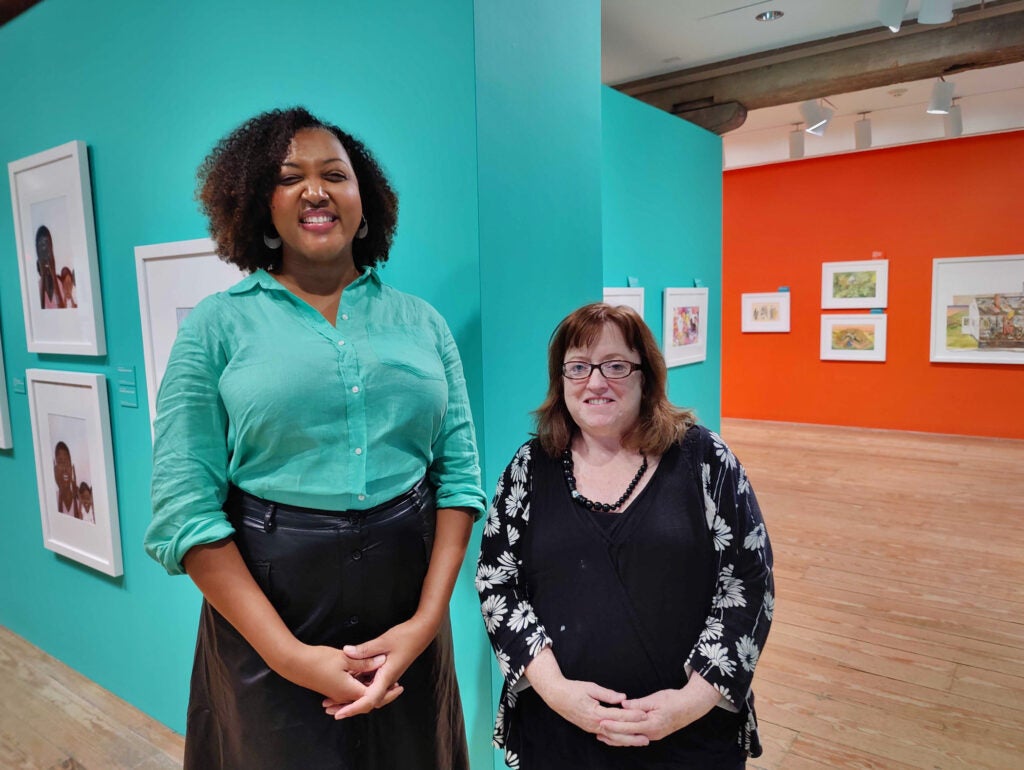
Visitors who wish to see work by the “godfathers” of American illustration can see pieces by Wyeth and Pyle in the Brandywine’s other galleries, but not in “Rooted.” Lewis wanted the show to be very contemporary: All the works have been published in the last three years. One of them, Qing Zhuang’s “Rainbow Shopping,” was published just six months ago.
“It’s so alive, still,” Lewis said. “It still has a lot of resonance and freshness.”
“Rooted” will be on view until February 28. All of the books featured in the exhibition are available for purchase in the museum gift shop.
WHYY is your source for fact-based, in-depth journalism and information. As a nonprofit organization, we rely on financial support from readers like you. Please give today.




